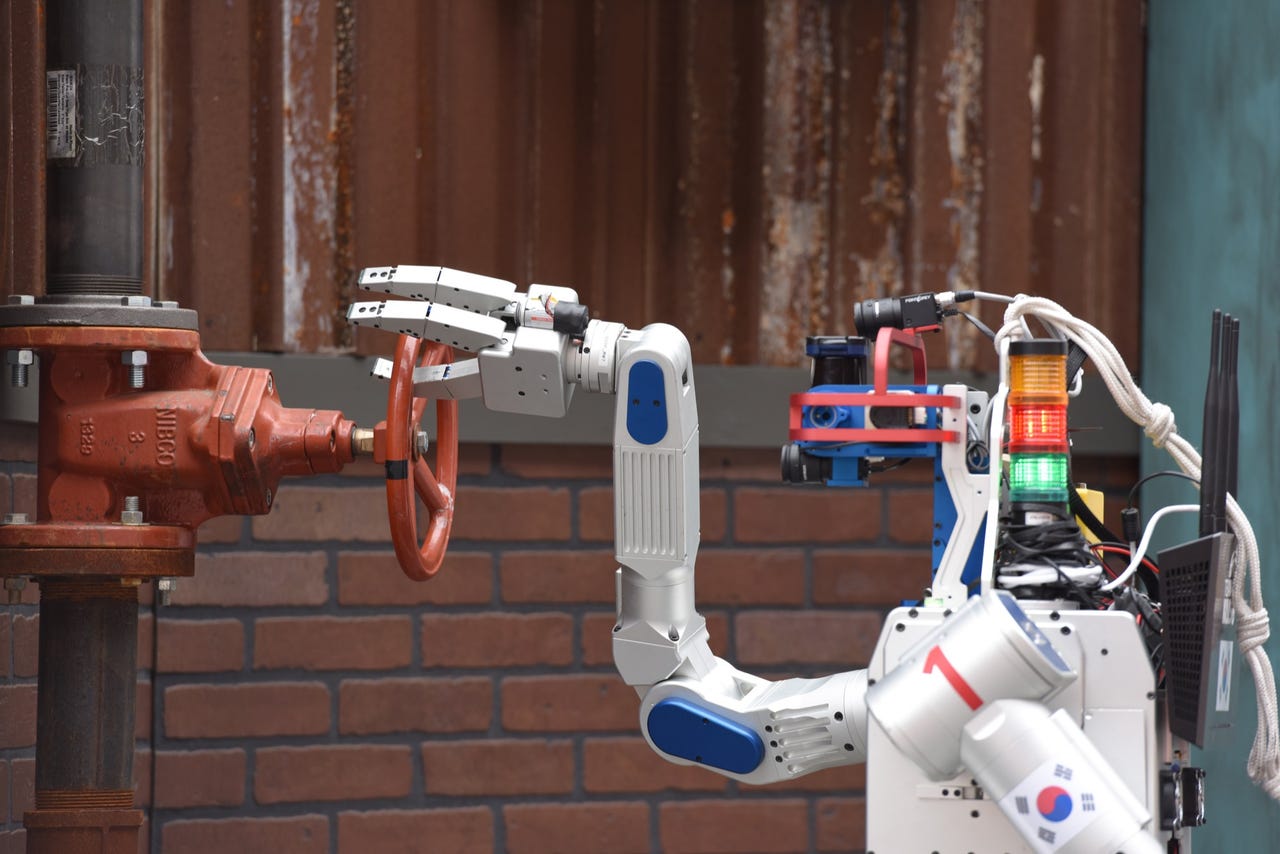Tapping into cloud-based IT resources can make robots smarter and more capable


A robot competing in the DARPA Robotics Challenge
What happens when you mix cloud computing with robotics? You get more powerful and smarter robots capable of communicating and collaborating with each other and learning from each others' mistakes so that they can accomplish a variety of tasks more effectively.
The emerging area of cloud robotics links robots to the cloud, including the enormous storage capabilities these hosted IT services offer. This connection to the cloud and/or corporate data centers can give robots more powerful computational, data storage, and communications abilities than they have when operating on a standalone basis.
See also
Among the potential applications of cloud-enabled robotics are autonomous mobile robots (think of self-driving cars as an example); industrial robots that will be able to learn to perform specialized tasks, such as threading cables, or share information in a group for collaborative tasks; and medical robots that tap into cloud-based resources, such as electronic medical records and patient health management systems, to better serve patients.
The possibilities extend to essentially any industry or organization that uses both cloud services and robotics -- or plans to deploy them in the future.
But cloud robotics faces a set of challenges that need to be addressed in order for the concept to work well in the business environment. For example, organizations using cloud robotics need to deal with balancing operations between local and cloud computation, ensuring adequate connectivity to the cloud, and providing strong data privacy and security for the cloud-robot environment.
Perhaps the biggest hurdle has to do with the makeup of individual robots. "The problem is that in many cases, the different physical hardware of each robot limits the applicability of other robot's shared knowledge," says Christian Penaloza, a researcher at the Advanced Telecommunications Research Institute (ATR), an organization that promotes innovative research on information and communication-related fields.
To address this, the latest trends in the academic community relate to developing new ways to define common knowledge representations, so each robot can "understand" and perform an interaction regardless of the physical differences of the robot, Penaloza says.
This is closely related to cloud computing services, such as RoboEarth, a repository where robots upload their "knowledge", Rapyuta, an open-source platform-as-a-service (PaaS) framework for robots, Survivable Cloud Multi-Robotics (SCMR), a framework that allows robot-to-robot communication, or Distributed Agents with Collective Intelligence (DAvinCi), a framework that provides the scalability and parallelism in large environments.
If robots are capable of interpreting knowledge representations shared by other robots through cloud computing services, "then the functionality of robots will exponentially grow because each robot will have access to unlimited resources of information on how to perform actions and understand human environments", Penaloza says.
Ultimately, organizations can benefit from using robots that are connected to the cloud because they no longer will need to train or program the robot to perform specific tasks, such as picking and placing objects into a box, Penaloza says. That will reduce engineering costs and improve efficiency.
"In the same way the Internet of Things is growing exponentially, cloud robotics will also expand and become a multimillion industry," Penaloza says. "In fact, companies like Microsoft or Amazon are already entering this industry and providing different types of services, such as Azure or Amazon Web Services, that potentially will manage data generated by robots."